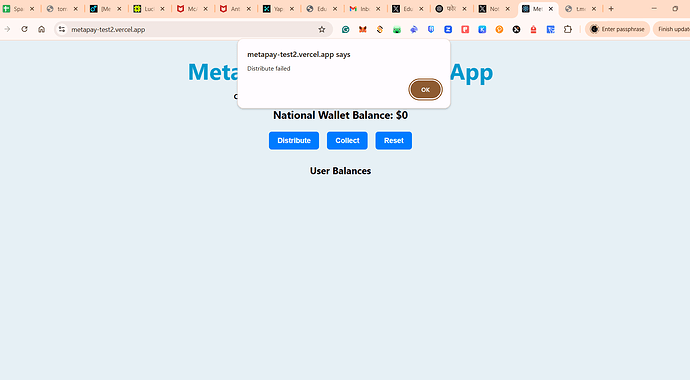Reply to @amardeep
Thank you for your thoughtful questions. Below is a detailed explanation of how the MetaPay model is structured for implementation in South Korea.
1. Is the initial 250 trillion KRW injection one-time or recurring?
The initial fund of 250 trillion KRW is a one-time injection, distributed over 10 months at 25 trillion KRW per month (₩500,000 × 50 million citizens).
After the 10-month distribution, the system transitions into a self-sustaining circular structure:
복사편집
250 → –25 → +25 → –25 → +25 → ...
At the end of each month, a portion of unused MetaPay (e.g., 10%) is recollected from citizens’ wallets and reused as the funding source for the next month. This enables an ongoing distribute → recollect → redistribute cycle with no additional taxes required.
Moreover, the initial injection is not a sunk cost — it functions as a public investment. The increased economic activity triggered by MetaPay stimulates higher consumption and business turnover, which leads to increased tax revenue (VAT, income tax, etc.). Over time, this additional tax income can be used to repay the initial issuance, such as via bond repayment or fund replenishment.
2. How does the system handle wallet synchronization and new citizens?
South Korea uses a Resident Registration Number (RRN) system that automatically registers births and deregisters deaths. This makes it possible to:
- Issue a MetaPay wallet automatically at birth
- Deactivate the wallet automatically upon death
- Enforce a “one person = one wallet” rule using ZK-ID authentication
In addition, Alith AI, a built-in intelligent fiscal agent, continuously monitors:
- Birth/death records and demographic trends
- Total payouts, recollections, and wallet activity
- Budget surpluses or deficits in real time
If fewer citizens require payout than expected, the surplus is stored in a reserve/investment pool managed by a DAO.
If more citizens require payout (e.g., due to births), the AI informs the Ministry of Strategy and Finance (MOSF) to adjust the budget or draw from the reserve.
New citizens begin receiving MetaPay from the next scheduled cycle — no need for mid-cycle redistribution.
3. Who governs the contract, and how are irregularities handled?
Initially, MetaPay governance is handled through a multi-signature wallet managed by:
- The Ministry of the Interior (citizen registry)
- The Ministry of Strategy and Finance (funding control)
- An independent DAO-based audit committee
Over time, MetaPay will transition to DAO-based governance, allowing citizens to vote on:
- Smart contract upgrades
- Distribution amounts and recollection ratios
- Emergency adjustments in case of macroeconomic shocks
In this process, Alith AI plays a dual role:
① Predictive Governance
- Simulates the impact of adjusting payout amounts, recollection percentages, or demographics
- Provides data-driven recommendations to the DAO before proposals are voted on
② Transaction Monitoring and Regulatory Enforcement
Alith AI continuously analyzes transaction patterns between users and businesses to prevent exploitation of MetaPay.
For example:
- If wages are excessively paid in MetaPay
- Or subcontractors repeatedly receive large amounts of MetaPay without triggering any recollection
→ Alith AI raises an automated alert,
→ The DAO or National Tax Service (NTS) is notified to conduct a thorough audit or investigation
→ Based on findings, tax audits or usage restrictions may be imposed.
This ensures MetaPay remains a fair and consumable basic income, rather than being abused for tax evasion, asset hoarding, or business manipulation.
AI-driven oversight, combined with public governance, helps preserve the integrity of the system.
4. How does the “50% MetaPay + 50% cash/card” rule work in real life?
Each citizen’s wallet enforces an automatic hybrid payment rule:
- For every purchase, 50% is deducted from MetaPay, and
- 50% from the user’s linked bank/card balance
Example: A ₩10,000 purchase is split into ₩5,000 MetaPay + ₩5,000 cash/card.
This system is implemented via:
- Smart POS integration at merchant locations
- In-app logic within the MetaPay wallet
- Regulatory standards for licensed payment providers
This hybrid system ensures:
- MetaPay is used rather than hoarded
- Consumers face no behavioral friction
- Inflation is stabilized through co-use of traditional currency
If the 50:50 ratio ever becomes inefficient or distorting, Alith AI will proactively suggest adjustments (e.g., shifting to 60:40) and the DAO can vote to implement changes.
If you’re interested in more details on identity verification (ZK-ID), circulation mechanics, inflation control, or code-level implementation, I’d be happy to share further insights.
Thanks again for your interest and engagement!
— Kyuha Yoon
Creator of MetaPay
@metapay_gyuha
![]() Expanding MetaPay with Alith AI Integration
Expanding MetaPay with Alith AI Integration
